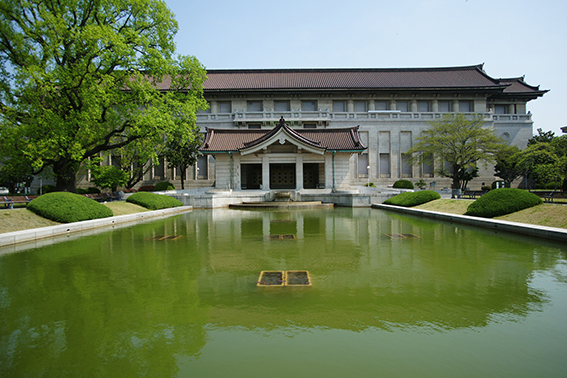
CIHA Colloquium in Tokyo, Japan
Sunday and Monday, March 10 and 11, 2019
At the Auditorium, Tokyo National Museum
CONCEPT OF THE COLLOQUIUM
Under the title “Toward the Future: Museums and Art History in East Asia,” the 2019 CIHA Colloquium in Tokyo examines the sate of the field of art history in the age of globalization by discussing various issues in East Asian art history from a comparative viewpoint, and explores ways to expand the field of study for the future. It also expects to contribute toward reorienting the history of East Asian art more comprehensively through discussion in the sessions focusing on the foundations and modern development of museums, art history, and other related art institutions and of related practices and activities such as collecting artistic objects and the historiography of arts and artists in pre-modern East Asia.
In fact, the substructure that provided the foundations and fostered the developments under discussion varied from region to region in East Asia even though the traditional notion of shuhua or “calligraphy and painting,” for example, was prevailing as the framework within which various artistic practices were attempted in pre-modern East Asian countries. In China, the notion of shuhua seemed to be maintained even after the establishment of modern academic art education and exhibition systems while, in Japan, coinage of the word bijutsu, meaning “Fine Arts,” expelled calligraphy from the realm of art defined as bijutsu and drove traditional notions into the category of outdated customs. In Korea, where the three categories of “Eastern painting,” “Western painting,” and “calligraphy” were maintained in official art exhibitions, traditional notions seemed to compromise with the Western notion of art, even after the neologism of bijutsu was introduced to East Asian countries and continued by the word meishu in Chinese and misul in Korean, using the same set of characters.
Considering these contexts in East Asia, this colloquium is subdivided into two sessions: “Comparative or Cross-Cultural Approaches to East Asian Art Before the Sustained Contact with the West” and “The Foundation and Development of Museums, Art Collecting, and Art History in East Asia After the Encounters with the West.” The first session focuses on various issues concerning pre-modern East Asian art and art institutions, while the second concentrates on those of modern and post-modern East Asia. Although the historical context of interactions with the West, as well as the context of modernization, differed from region to region in East Asia as in the case of introducing the Western notion of art, both sessions take comparative and regional, interregional, or trans-regional viewpoints to examine artistic practices and activities of the past and present. These viewpoints may stimulate comparisons between pre-modern practices and modern institutions or between different regions in East Asia. They may also concern Western reactions after the direct contact with East Asia, such as the collecting of objects from the East.
The range of topics to take up in the two sessions of this colloquium is rather limited, but a focused discussion, we believe, will contribute to the future development of the field of study. From the 1980s onward, a set of bipolar tendencies has become noticeable in art historical studies. On the one hand, globally-oriented research has expanded the traditional field of study in art history to the study of images and visual cultures in a broad sense or even to a kind of image anthropology. On the other hand, regionally-oriented research has underscored the historicity of the Western term of “art” and been skeptical of the universality of that term, which art history had presumed as the foundation of the discipline from the outset. At present, the field of art history appears to be headed more and more toward a borderless vision. Responding to the present trend, this colloquium is expected to help redefine research frameworks in the field of study.
Website of the colloquium:
http://www.l.u-tokyo.ac.jp/CIHA2019/
E-book of the Proceedings (New):
"New Worlds: Frontiers, Inclusions, Utopias"
More Information:
https://o-museum.or.jp/en/publics/index/544/
Greetings from the Organizers
SPEECH AT THE CIHA COLLOQUIUM, JAPAN
LaoZhu
President of CIHA
March 10, 2019 in Tokyo
